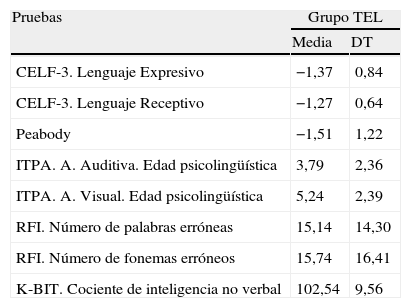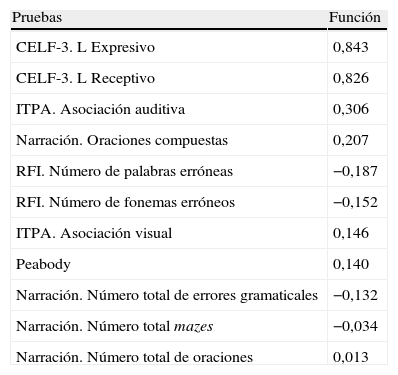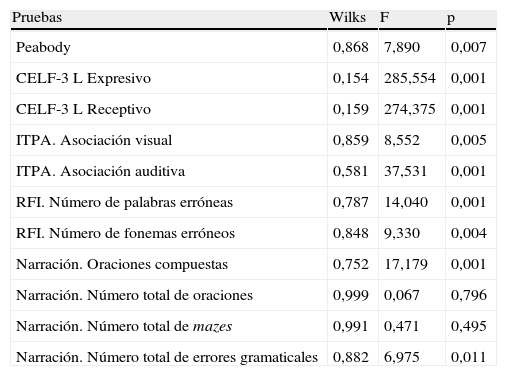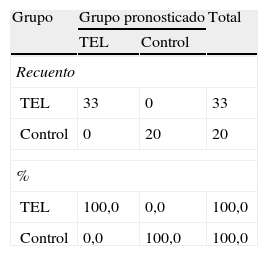En la presente investigación nos hemos propuesto un doble objetivo. En primer lugar, reconocer aquellos instrumentos que ayuden a identificar y diferenciar con mayor precisión niños con desarrollo típico y niños con Trastorno Específico del Lenguaje (TEL) y, en segundo lugar, establecer cuáles son las características subyacentes más relevantes que nos permiten agrupar a los niños con TEL en diferentes subtipos. La muestra estuvo compuesta por 33alumnos diagnosticados con TEL y 20niños sin problemas de lenguaje. Los niños cursaban desde el último año de Educación Infantil (5años) hasta 5.° de Primaria (11años). Los resultados indicaron, por un lado, que el CELF-3 es la prueba que nos permite un mejor diagnóstico del TEL, y, por otro lado, se establecieron 2grandes subtipos de TEL: el fonológico-sintáctico y el léxico-sintáctico.
The aim of this study was two-fold. Firstly, to identify the instruments that help to more accurately distinguish between children with normal development and those with Specific Language Impairment (SLI) and, secondly, to establish the most important underlying characteristics that allow children with SLI to be grouped into different subtypes. The sample consisted of 33children diagnosed with SLI and 20children without language problems. Children were enrolled from the last year of preschool education (5years) to Primary5 (11years). The results showed that the test that allows the most accurate diagnosis of SLI is the Clinical Evaluation of Language Fundamentals-Third Edition (CELF-3), and that there are two major subtypes of SLI, the phonological-syntactic subtype and the lexical-syntactic subtype.
Artículo
Comprando el artículo el PDF del mismo podrá ser descargado
Precio 19,34 €
Comprar ahora


















